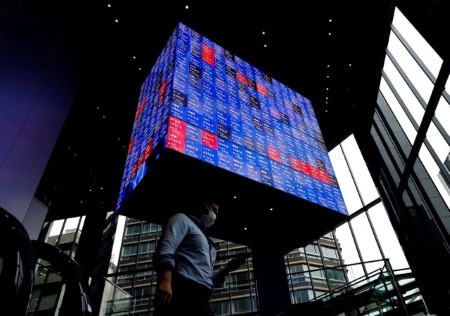




Quarterly Economic Growth Release: More BSP cuts to come
 DOWNLOAD
DOWNLOAD

Monthly Economic Update: Fed catches up
 DOWNLOAD
DOWNLOAD

Inflation Update: Steady and mellow
 DOWNLOAD
DOWNLOAD


Bank of Korea eyed, US yields slide

The Bank of Korea’s interest rate decision and guidance take center stage in Asia on Thursday, as investors digest revised US jobs data and Fed minutes on Wednesday that fanned hopes that the looming US rate-cutting cycle will be a bold one.
The calendar in Asia also includes purchasing managers index data from Japan, Australia, and India, inflation from Malaysia, and some company earnings from China and Hong Kong, namely Baidu’s second-quarter results.
China’s largest search engine provider is expected to see a decline in revenue for the first time since the fourth quarter of 2022 as ad sales drop. Investors will look for comments on ad market trends and updates on its key AI offering Ernie Bot.
The broader trading and investment picture, however, will be dominated by the latest shift in the US rate outlook, as attention turns toward Fed Chair Jerome Powell’s Jackson Hole speech on Friday.
Lower Treasury yields and a falling dollar should help ease financial conditions for emerging markets and encourage risk-taking in Asia on Thursday, providing the slump in yields isn’t reflecting heightened fears of recession.
That doesn’t appear to be the case – Wall Street rose on Wednesday and the S&P 500 is now less than 1% from its all-time peak – although the fall in Treasury yields will bear close attention.
The dollar hit another low for the year against a basket of G10 currencies on Wednesday and the MSCI index of emerging market currencies hugged its record high. China’s yuan was fixed at a one-month high on Wednesday, while the Japanese yen touched a two-week high through 145.00 per dollar.
The dollar is suffering across the board from falling US yields.
After the Bank of Thailand, Bank Indonesia and People’s Bank of China all kept their benchmark lending rates unchanged this week, the spotlight falls on the Bank of Korea on Thursday.
On Wednesday the Thai central bank struck a neutral tone in its statement, while Bank Indonesia Governor Perry Warjiyo said supporting the rupiah helps bring down the cost of imports, especially food prices.
The BOK is also expected to stand pat on rates and leave its benchmark rate at 3.50% where it has been since January last year. Analysts expect the BOK to wait for the Fed to begin cutting rates before easing policy in the fourth quarter.
With inflation rising 2.6% in July from an 11-month low of 2.4% in June, moving further away from the central bank’s 2% target, the BOK may need to see prices stabilizing before it starts to ease policy.
Here are key developments that could provide more direction to Asian markets on Thursday:
– South Korea interest rate decision
– Japan, Australia, India manufacturing & services PMIs (August)
– Malaysia inflation (July)
(Reporting by Jamie McGeever; Editing by Josie Kao)
This article originally appeared on reuters.com





 By Reuters
By Reuters